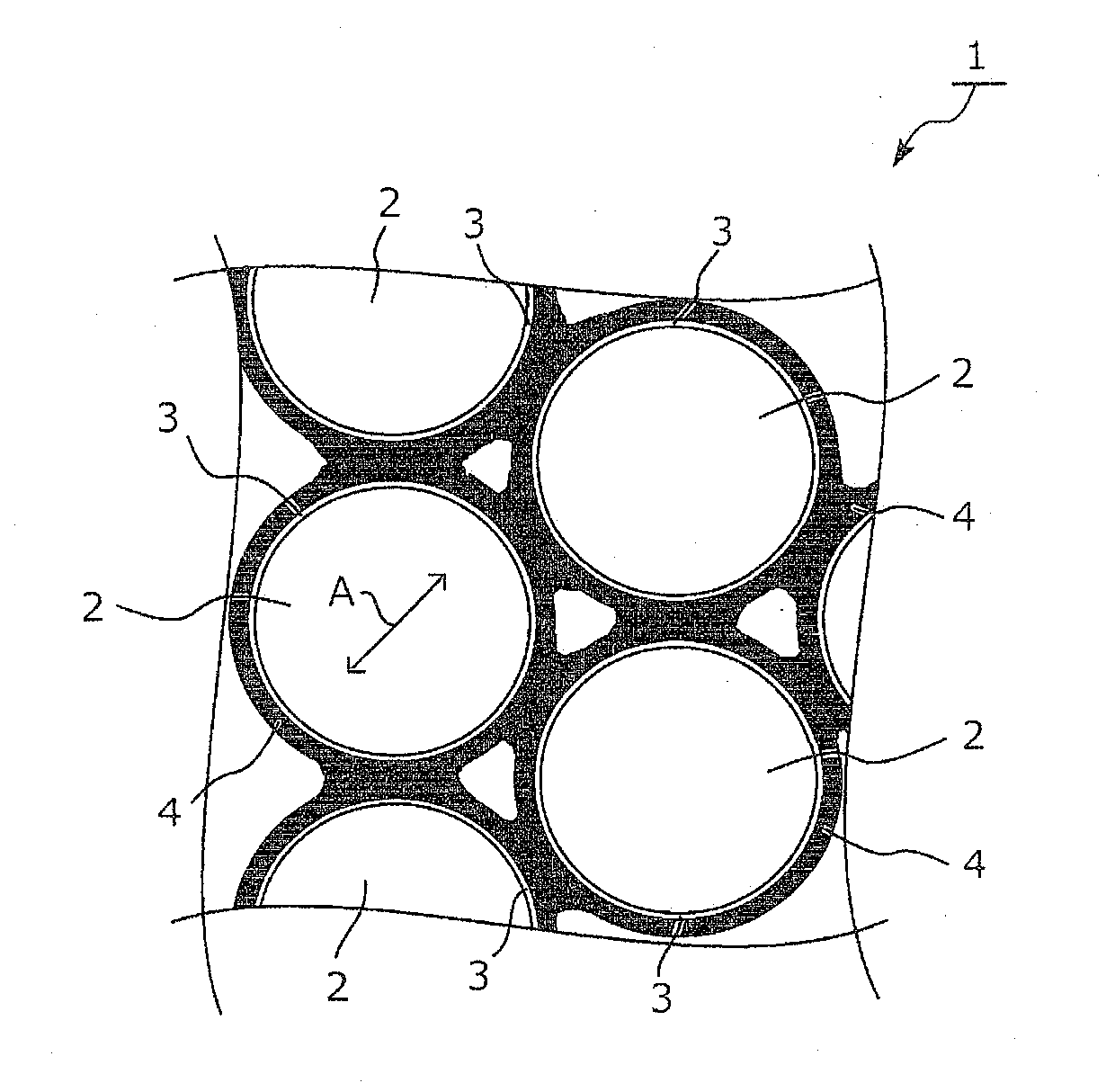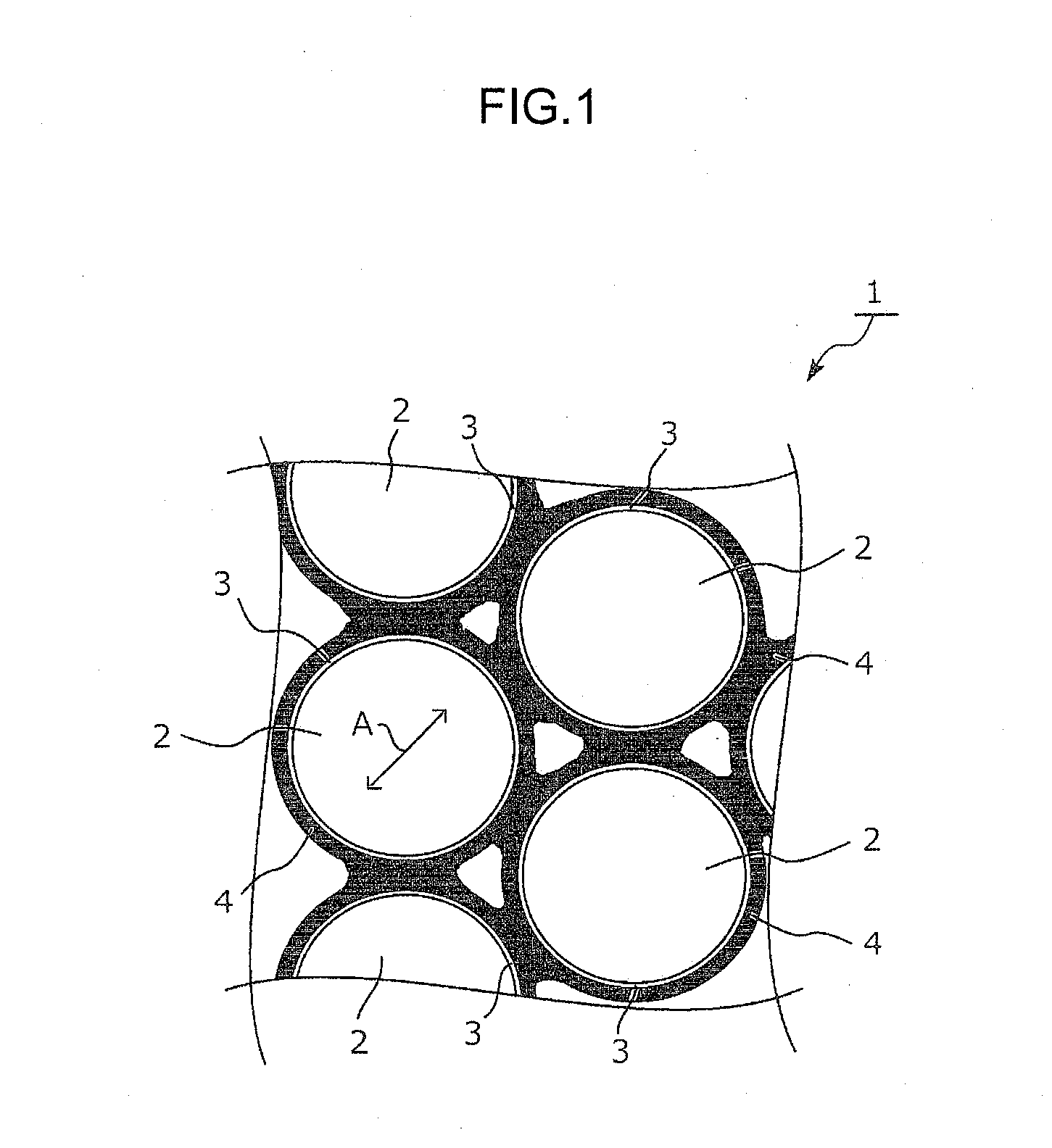Electrode material and method for producing electrode material
a technology of electrode material and electrode material, which is applied in the direction of conductors, non-metal conductors, cell components, etc., can solve the problems of low degree of freedom in diffusion direction, poor only one-dimensional ion pass of lithium metal phosphate, etc., to improve both electron conductivity and lithium ion conductivity, the viscosity of the coating dispersion can be suppressed, and the specific surface area small
- Summary
- Abstract
- Description
- Claims
- Application Information
AI Technical Summary
Benefits of technology
Problems solved by technology
Method used
Image
Examples
example 1
[0114]A production method of Example 1 is described in the following.
[0115]It should be noted that M of an electrode active material LiMPO4 is M=[FetMn1-t], wherein the coefficient t is estimated to be approximately 0.03 in Example 1 below, and 0 in Example 2 and Comparative Example 1. In either case, M is Mn alone or close to Mn alone.
[0116]First, a LiMnPO4 base material having a minute particle diameter is prepared with reference to U.S. Pat. No. 4,465,412 and Japanese Translation of PCT International Application Publication No. JP-T-2010-500113 in the following manner.
[0117]First, a nearly saturated aqueous solution of reagent LiOH.H2O2O (hereinafter, Li source solution) at room temperature, a nearly saturated aqueous solution of reagent MnSO4 (hereinafter, Mn source solution) at room temperature, and a mixed solution of reagent 85% phosphoric acid, reagent dimethylsulfoxide (DMSO), and water (hereinafter, P source DMSO solution) were each prepared in a prescribed amount such tha...
example 2
[0139]A production method of Example 2 is described in the following.
[0140]Using a LiMnPO4 base material prepared in the same manner as the one in Example 1, Li ion conductive substance along with conductive carbon C were self-assembled on the surface of the LiMnPO4 base material to form an electrode material with a layer comprising Li ion conductive substance and conductive carbon C in the following manner.
[0141]1.15 g of a 250° C. softening point pitch MCP-250D as conductive carbon precursor, manufactured by JFE Chemical Corporation, was added to the LiMnPO4 base material prepared in the same manner as the one in Example 1. The materials were then mixed and granulated using a planetary centrifugal mixer ARE-310, manufactured by THINKY CORPORATION, to obtain a mixture having a secondary particle diameter in the range of approximately 1 to 30 μm. The mixture was calcinated in a nitrogen gas stream at approximately 710° C. to obtain an electrode material coated with a layer comprisin...
PUM
| Property | Measurement | Unit |
|---|---|---|
| take-off angle | aaaaa | aaaaa |
| take-off angle | aaaaa | aaaaa |
| average primary particle diameter | aaaaa | aaaaa |
Abstract
Description
Claims
Application Information
 Login to View More
Login to View More - R&D
- Intellectual Property
- Life Sciences
- Materials
- Tech Scout
- Unparalleled Data Quality
- Higher Quality Content
- 60% Fewer Hallucinations
Browse by: Latest US Patents, China's latest patents, Technical Efficacy Thesaurus, Application Domain, Technology Topic, Popular Technical Reports.
© 2025 PatSnap. All rights reserved.Legal|Privacy policy|Modern Slavery Act Transparency Statement|Sitemap|About US| Contact US: help@patsnap.com



